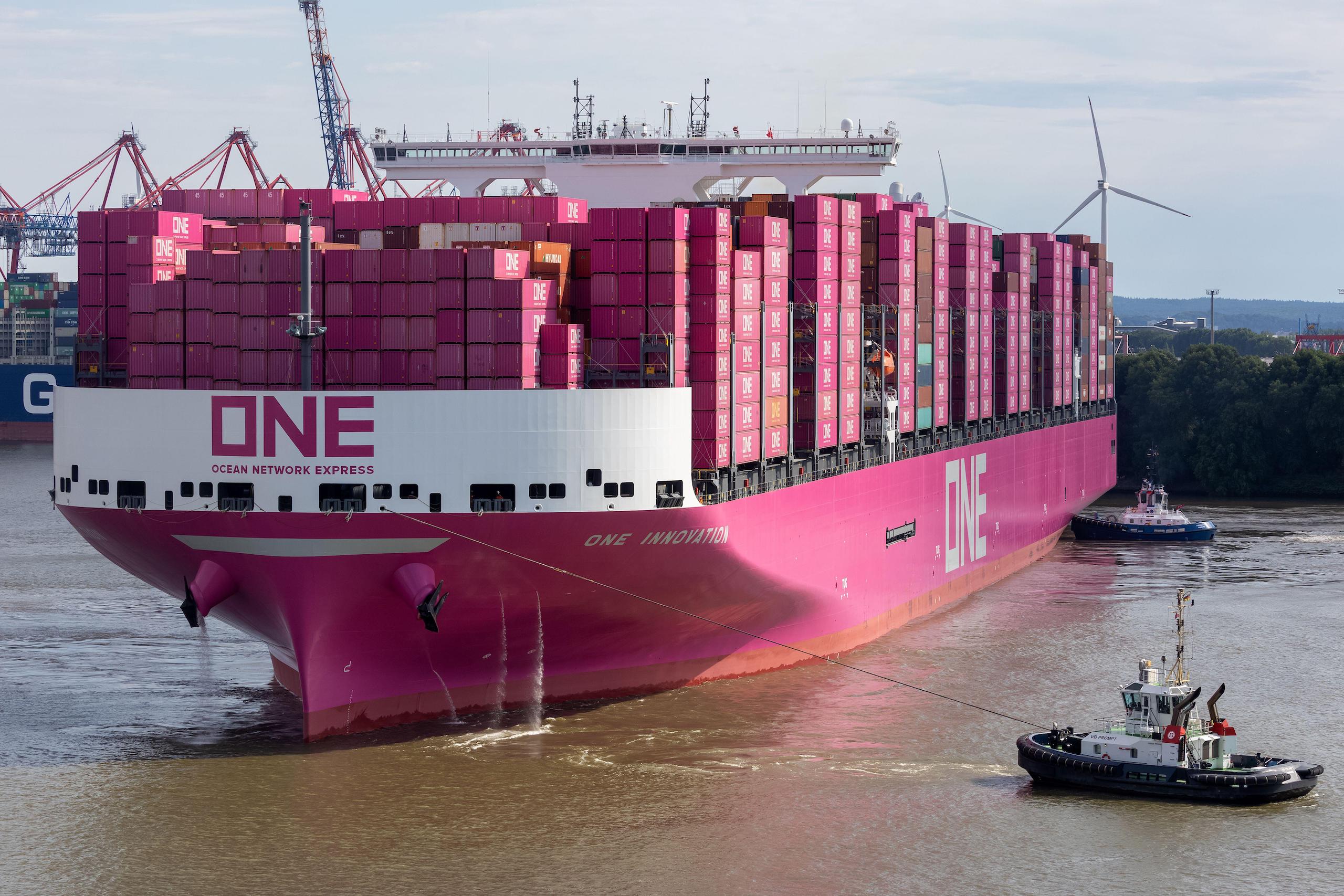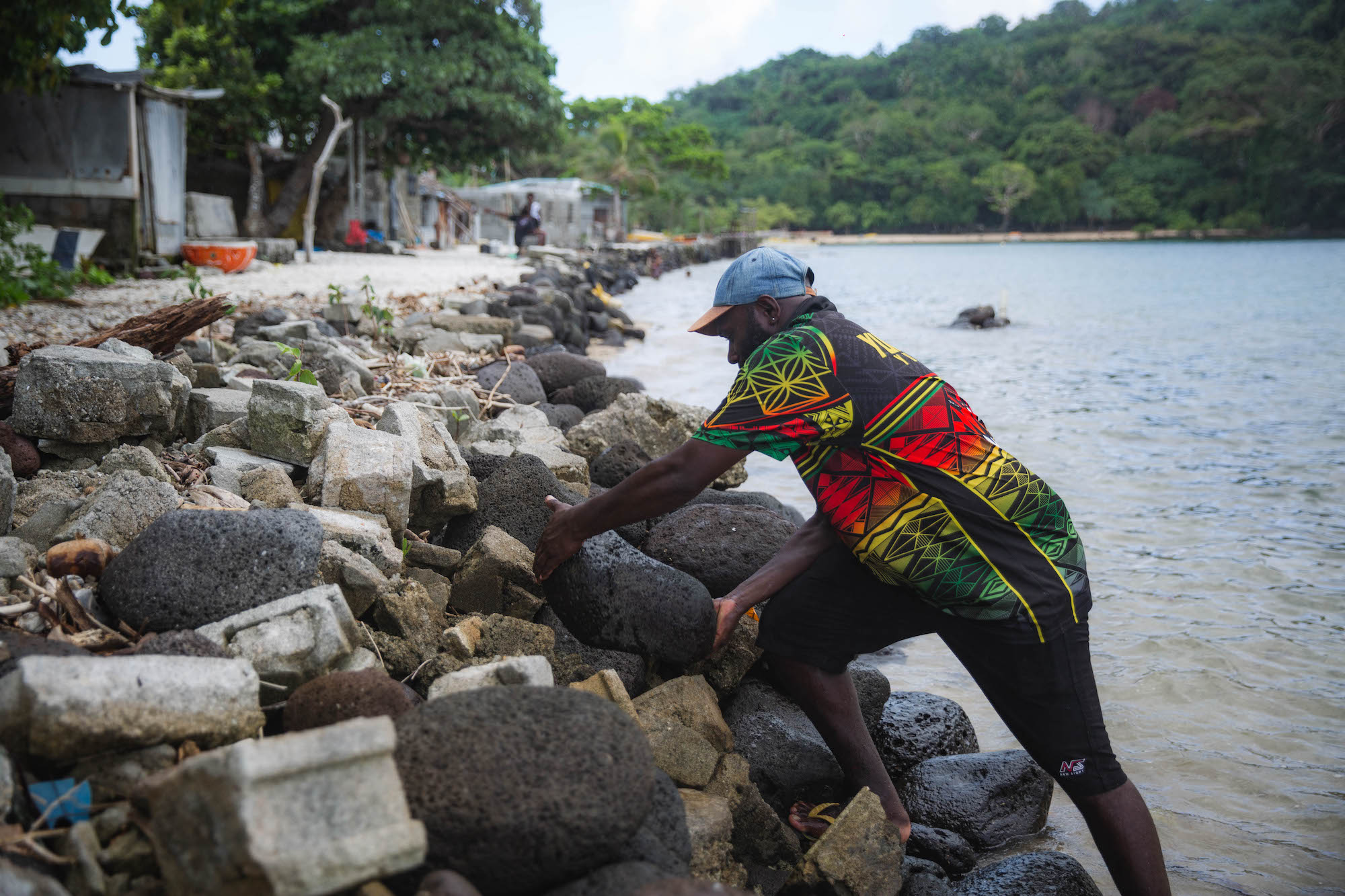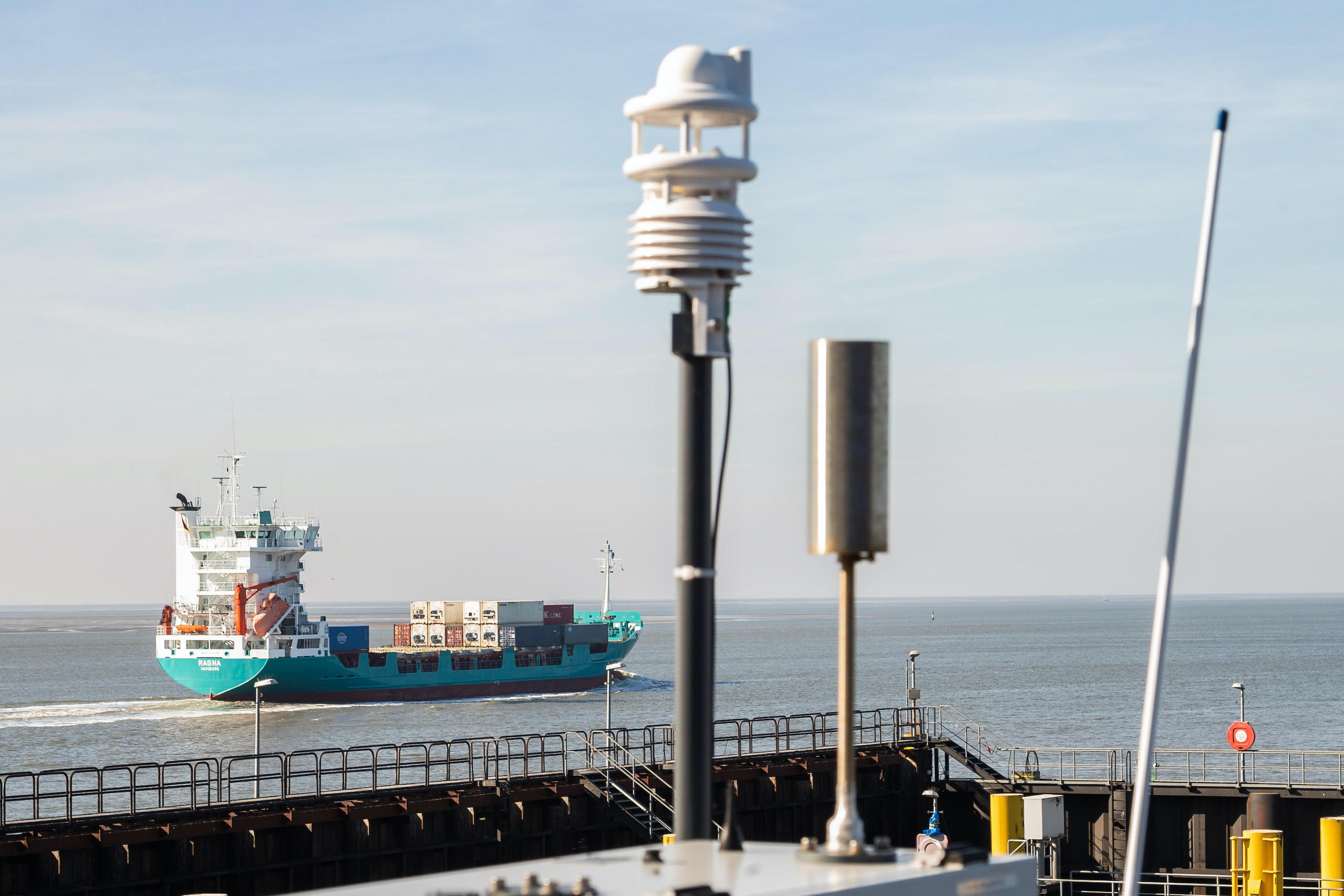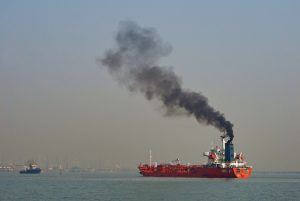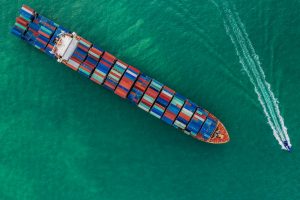Deal! Hundreds of delegates from around the world rise to their feet, smiles break out from behind diplomatic poker faces, and applause fills the huge plenary room of the UN’s International Maritime Organisation (IMO) in London.
There had been two weeks of intense negotiations, but 7 July was one of those UN moments – like the signing of the Paris Agreement itself – that we wait years for. Governments had finally agreed tougher climate targets for global shipping, an industry that emits 1 billion tonnes of CO2 a year. For scale, the entirety of south and central America emitted 1.3 billion tonnes in 2022.
But was it real? Will this agreement really lower emissions? And is it aligned with the Paris Agreement? Let’s take a closer look.
The IMO’s stricter climate targets
The main part of the deal was to agree on more stringent climate targets, that reduce emissions faster and further.
What IMO had previously was a commitment to “at least halve” shipping emissions by 2050. The revised target this month is for shipping to reach net-zero emissions “by or around, i.e. close to 2050”.
That convoluted language was the price of bringing countries already committed to bringing shipping emissions down to zero by 2050 together with countries that have later domestic net-zero targets (such as China’s 2060), and others for whom the concept of aiming for zero emissions is still a stretch.
Nevertheless, significant progress has been made.
What about action even sooner? IPCC climate scientists tell us that this decade is essential for bringing down cumulative emissions to keep global warming to 1.5C.
Here, Pacific Island states, particularly the Marshall Islands, Solomon Islands, and Vanuatu, showed immense diplomatic skill and resilience. They persuaded other countries to agree on stretch goals of “at least 20%, striving for 30%” emissions reduction by 2030 (compared to the IMO’s fixed baseline of 2008), and “at least 70%, striving for 80%” by 2040.
These targets are still not aligned with the Paris Agreement’s 1.5C temperature ceiling. That would have required emissions cuts of around 36% by 2030, according to the Science Based Targets Initiative, which helps companies set emissions reduction targets based on scientific evidence. That level was supported by the Pacific Island nations, US, Canada, and the UK.
However, the stretch targets were as far as the Pacific Island countries could move others, and still mean a reduction in cumulative emissions of a whopping 10.8 billion tonnes CO2 equivalent out to 2050 compared to the Initial IMO Strategy adopted in 2018 (a drop from 27.9 billion tonnes to 17.1 billion tonnes). That’s as much as shutting down 42 coal-fired power plants of 1 GW capacity each, with their full lifetime of 40 years remaining.
There’s a big “if” though. Will countries actually achieve these reductions they have agreed to?
China, Brazil and Argentina could only accept these ambitious numbers by calling them “Indicative Checkpoints” rather than a target. That raises doubts among climate NGOs of whether all countries are serious about meeting them.
Outside emissions reductions, IMO also agreed new goals to scale-up green technologies, setting a goal of between 5% and 10% “zero or near-zero greenhouse gas emission technologies, fuels and/or energy sources” in shipping by 2030.
That broader language of “energy sources”, rather than just fuels, was a big win for the booming and diverse group of wind-propulsion technology start-ups. Twenty-eight cargo ships already have wind-assisted propulsion in operation on the water this year, according to the International WindShip Association. This year, next year and 2025 onwards will see the launch of new cargo ships with wind power as their main energy source.
That’s encouraging, but enormous and rapid scale-up is required, to get wind technologies retrofitted on a significant share of the 60,000 large cargo vessels plying our oceans.
How will the IMO meet its new goals?
So how does IMO plan to reach its ambitious 2030 goals? At its July summit, the organisation agreed to finish designing mid-term “measures” (legally enforced policies to actually drive emissions reductions) by 2025, to come into force in 2027.
The basket includes both an “economic” and a “technical” candidate measure. The economic measure will be some sort of carbon-pricing mechanism – whether a simple agreed levy (eg US$100) on each tonne of greenhouse gases emitted, a feebate programme, or a cap-and-trade system (in which the price per tonne would vary according to market forces).
Economic measures help close the price gap between currently expensive green fuels, and cheap tax-free fossil fuel, and they also raise revenue. This money will be crucial considering we need between $50 billion and $70 billion a year of investment to fully decarbonise shipping by 2050, according to the Global Maritime Forum.
The big unknown is whether some of the potentially huge revenues raised by a carbon price on shipping can be spent outside the shipping sector itself, to strengthen countries’ climate resilience and adaptation. This approach is supported by Pacific nations most threatened by climate change, and endorsed by the World Bank.
Meanwhile, countries that currently dominate the global shipping industry, such as China, Japan, and Korea, are keener for that money to be kept within the shipping sector itself.
Many countries at IMO spoke in favour of a “just and equitable” transition, that “leaves no one behind”, which would seem to imply investing at least some revenues outside of the sector, but will this be followed through on?
The technical element will be some sort of Greenhouse Gas Fuel Standard (GFS), basically a mandate that each ship (or maybe each shipping company) must use a growing percentage of zero-carbon fuels each year, displacing oil use.
This could be a very powerful lever to decarbonise shipping – comparable to the regulation that has led to booming electric vehicle sales in Europe and China. However, the devil is in the detail of how the regulation would treat biofuels and Liquified Natural Gas (LNG), both of which can often lead to higher emissions than bunker fuel, depending on land use considerations, and levels of methane slip.
Will the 2030 goals be met?
A bigger question looms over this entire timeline agreed at IMO. Even if a well-designed green fuels mandate and a reasonably high carbon price of around $100 per tonne come into force in 2027, does that leave enough time to meet the ambitious 2030 goals just three years later?
I asked the IMO’s outgoing secretary general, Kitack Lim, if he was confident the 2030 targets would be met, given that short three-year runway?
He said the short-term measures already agreed would do much of the work.
“EEXI [Energy Efficiency Existing Ship Index] is already in place, CII [Carbon Intensity Index] is already in place. This is ongoing already. On top of that, we’ll add a fuel standard, and an economic measure. That’s why I believe the 2030 target will be accomplished. Why? Already we are seeing shipping moving towards the 40% [carbon intensity] reduction target by 2030.”
That carbon intensity target of 40% improvement by 2030 was left unchanged this month from the Initial Strategy. And while Mr Lim is right that shipping is on course to meet it, that doesn’t mean we’re anywhere close to reducing outright emissions by 2030, given the expected growth in global trade volumes.
Indeed, the EEXI policy will only nudge shipping emissions about 1% off its business-as-usual growth pathway by 2030, according to ICCT, leaving outright emissions significantly higher by then.
So, clearly, the hard work of getting to 30% outright emissions reduction by 2030 – IMO’s agreed target – won’t be done by IMO itself.
Perhaps that’s unfair. There’s a certain self-fulfilling momentum created when governments agree to non-binding targets. Just look at the Paris Agreement, and the booming wind and solar investment that has followed.
UMAS, a maritime consultancy, argues that the IMO’s 2023 Strategy “sends an unequivocal signal to investors that ships being ordered today, and many already built, have to be capable of running on zero-emission fuels”.
What must companies and countries do?
So the onus really is on the industry itself now, to invest at the levels needed to meet the IMO’s 30% emissions reduction by 2030 goal, and the 10% zero GHG fuels/energy sources by 2030 goal. So far, shipping companies have seemed keener to give their windfall 2021/2022 profits to shareholders as dividends, rather than invest.
One key development to watch will be how the industry responds to the “Request for Proposals” this year by some big companies who want to ship their goods on zero-emission freight services. Which container lines will step up, and how competitive will the offers be?
Individual countries are also going to have to seriously step up their actions in this sector, to have a chance of achieving what they’ve agreed to internationally at IMO.
Countries can include their international shipping routes in their climate targets (as the UK has), mandate that plug-in shore power be used by all ships calling at their ports in the near future (as the EU has), empower their ports to take climate action, subsidise production of green hydrogen (as the US has), clean up domestic inland shipping routes with battery-powered ships (as China is), and start to put serious cash behind their many commitments to establish green international shipping routes.
Countries can also turn up at the COP28 climate talks this year with shipping included in their Nationally Determined Contribution (NDC) under the Paris Agreement – to show they’re serious about achieving what they’ve said they will at IMO.
With stronger national action in this sector, significantly ramped up corporate investment, and mandatory, well-enforced carbon pricing and green Fuel Standard agreed in 2025, July’s IMO summit will be seen as a major turning point towards a world of green global trade.
